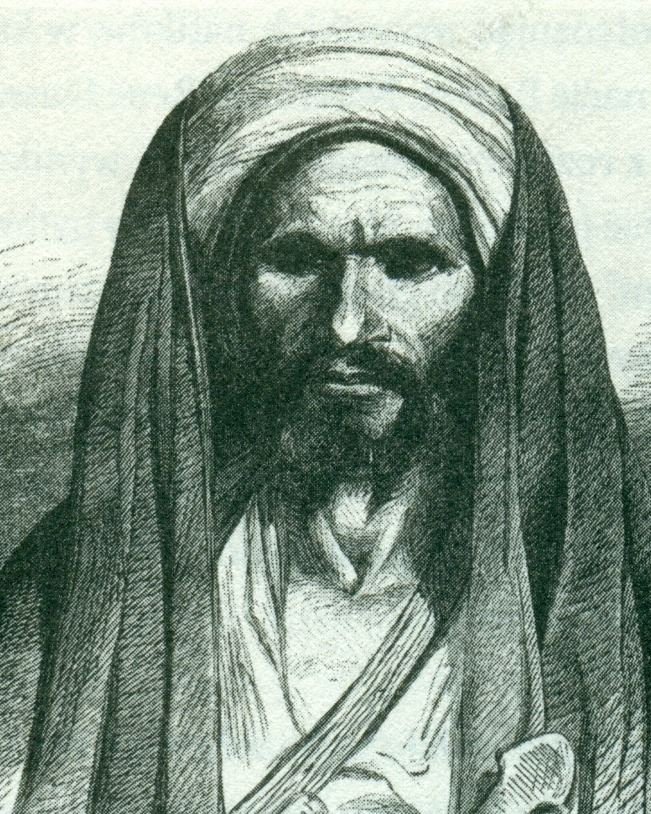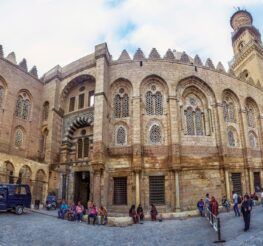El Hashashin, History’s Most Famous Assassins
history Ramadan Ramadan Series Series
Rawya Lamei
Karim Abdel Aziz as Hassan El Sabbah in El Hashashin
Few political and religious sects have inspired curiosity, myths, and legends like the Hashashin. Known by some as a group of hedonists living in a paradise on earth and by others as a menacing group striking fear and terror across West Asia and North Africa, one thing is known for sure: the Hashashin were a group of Nizari Ismaili Shia rebels, initially led by Hassan El Sabah (or Hassan-i Sabbah) who we’ll see brought to the screen with Karim Abdel Aziz’ incredible talent this Ramadan in the upcoming eponymous series, El Hashashin. With such little information on this group and the number of embellishments to their story, here are some facts about them that we’re (almost) certain are true.
We have very few reliable historical accounts of who exactly the Hashashin were – we’re even unsure of where they got their name! With the English word “assassin” stemming from the name of this group of – well – assassins, the possibility of their being named after their cannabis (hashish in Arabic) consumption habits has been nearly eliminated. The reason why we know so little about them is because most documented first-hand resources were burned by the Mongols in the mid-13th century when they sacked all of the Hashashin’s fortresses and obliterated their order.

Old Man of the Mountain, Hasan El Sabbah’s 19th century engraving
The order of the Hashashin began with Hassan Sabbah, who is thought to have learned theology in the modern-day Iranian city of Rayy. It is speculated that he adopted the Ismaili sect as a teenager, and from there began his call for the sect in Sunni-ruled areas. When he took over the Alamut Citadel in 1090 CE, his threat to leaders of the Islamicates and Crusaders was truly felt. Dubbed “the Eagle’s Nest,” the Alamut Citadel was seen as an impregnable fortress with steep access points, a remote location, and harsh weather. It served as the headquarters of the order of the Hashashin, though they had many other fortresses under their control, most notably the Masyaf Castle in modern-day Syria.
According to Egyptians’ favourite historical resource, El Da7ee7, Ahmed El Ghandour cites Persian historian Ata-Malik Juvayni, stating that Sabbah’s call for the Nizari Ismaili sect greatly angered the Seljuks – the Turkish dynasty ruling over most of Central Asia at the time. Sabbah managed to amass a great number of followers across the region, who became known as feda’yin (those willing to sacrifice themselves for God).

Alamut Castle
Due to the Hashashin’s ideological clash with the Seljuks, the Hashashin plotted against them, along with others who defied their convictions. Since they had no military power, they resorted to targeted assassinations, typically of leaders, from monarchs to military generals. It’s reported that they attempted to murder the great Sultan Salah Al Din Al Ayyubi (commonly Latinised as Saladin), leading him to wear chainmail under his clothes. Saladin was far from the only leader to adopt this security measure. These assassinations tended to be carried out in broad daylight in a crowded area by small teams disguised as monks or beggars. Since these groups were unlikely to survive after attacking, they were dubbed feda’yin.
Sabbah led the Hashashin from Alamut Castle until his death in 1124 CE, about 35 years after taking over the fortress. The order continued operations until the Mongol invasion, under the leadership of Hulegu, viceroy of modern-day Iran and brother of the Great Khan of the Mongol Empire, Mongke Khan. Nearly a millennium after their destruction, the Hashashin left a lasting legacy, harrowing as it may be, and inspired many folktales and some of our favourite video games like Assassin’s Creed.

Hassan El Sabbah, via How Stuff Works
recommended
 Arts & Culture
Arts & Culture
The Coptic Museum: The History of Egypt to the Tunes of Psalms of David
arts & culture cairo museums +4 Health & Fitness
Health & Fitness
Egyptians in the 2024 Summer Olympics
Egyptians in the Olympics Olympics +1 City Life
City Life
Weekend Guide: Bazar by Sasson, Memo, The Cadillacs, Heya Bazaar, Dou, Nesma Herky & More
Concerts The Weekend Guide +2 Arts & Culture
Arts & Culture

